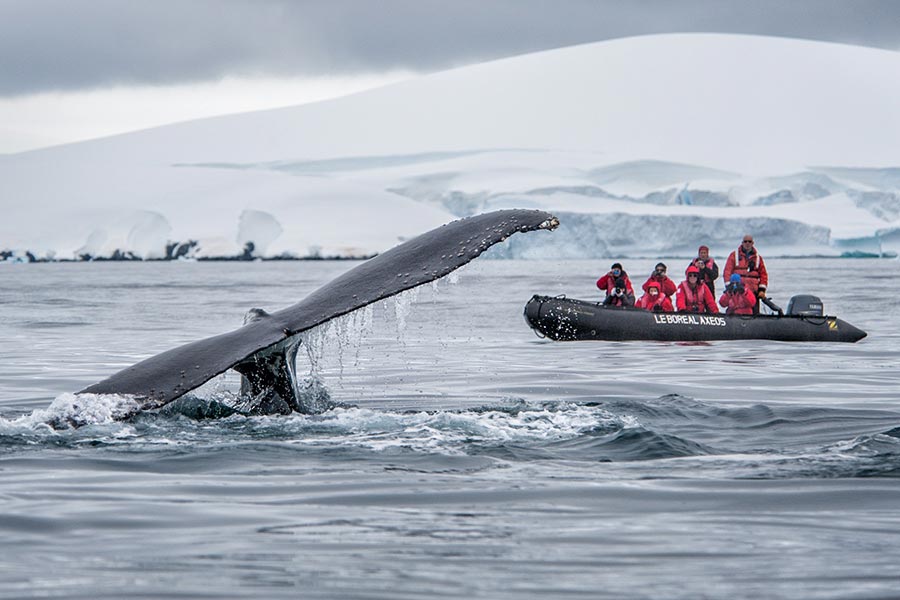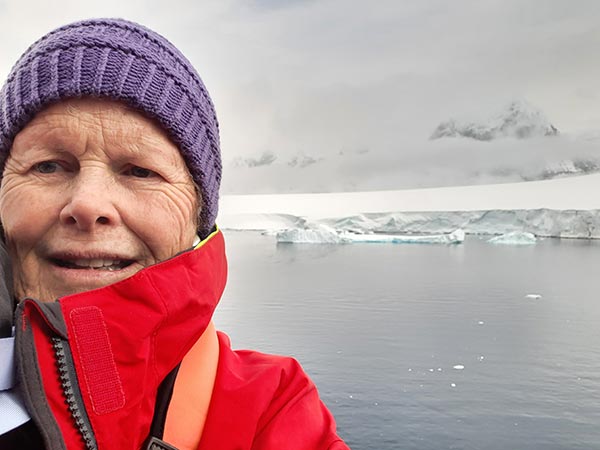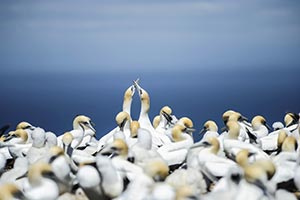How to Visit Antarctica: A Comprehensive Guide

Photo ©Ponant/Lorraine Turci
Visiting Antarctica is a dream for many adventurers and nature enthusiasts. As the most remote and least explored continent, it offers unparalleled opportunities to witness pristine landscapes and unique wildlife. Planning a trip to this icy wonderland requires careful consideration of the best time to visit, the wildlife you might encounter, and the essentials to pack for a successful journey. Exclusive Cruising offers a huge variety of times and ways you can visit Antarctica, this guide will provide you with all the information you need to choose an unforgettable Antarctic adventure.

“Dealing with someone like Julie, who has been there, made it so much easier as Julie was able to suggest clothing and other insider tips that made our trip so much better."
Penny travelled to Antarctica with Exclusively Cruising.
When to Go to Antarctica
Antarctica is accessible to tourists primarily during the Antarctic summer, which spans from November to March. Visiting during summer means there is nearly 24-hours of daylight, and the warmer weather means the region is more accessible by Zodiac, allowing you to actually see Antarctica up close. Each month offers different experiences:
November to Early December
- Weather: Early summer with colder temperatures and more snow.
- Wildlife: Best time to see penguins courting and building nests. Elephant seals and fur seals can be seen along the shores.
- Scenery: Snow-covered landscapes are pristine and untouched.
- Activities: Skiing, snowboarding and camping on ice.

Photos © Quark/Acacia Johnson, Ponant/Olivier Blaud
Mid-December to January
- Weather: Peak summer with longer days and milder temperatures.
- Wildlife: Peak of penguin hatching season, with chicks visible. Seals are more active. Whale sightings increase towards the end of January.
- Scenery: Snow starts to melt, revealing the rocky landscape.
- Activities: Sea-kayaking and snorkeling.

Photos © Ponant/Nathalie Michel, Quark/David Merron, & Quark/Nicky Souness
February to March
- Weather: Late summer with shorter days and colder temperatures returning.
- Wildlife: Best time for whale watching, as humpback, minke, and orcas are abundant. Penguin chicks are growing, and seals are still active.
- Scenery: Melting ice allows for better access to certain areas, and the landscape is more varied.
- Activities: Scuba-diving and climbing.

Photos © Ponant/Olivier Blaud, Quark/David Merron, & Ponant/Margot Sib
We asked Julie:
Why is Antarctica one of your favourite travel destinations?
Julie: The majestic icebergs are mesmerising the sheer size and shapes I could spend ages just watching them AND then there is the wildlife – so many penguins trundling along going about their daily business not the slightest big fazed by people watching them. I’ve always loved whales and to see so many was a real highlight for me. It’s all consuming, cold and white and just amazing.
Wildlife Encounters in Antarctica
Antarctica is home to a unique array of wildlife, each season offering different opportunities to observe these incredible creatures:
Penguins
- Adelie Penguins: Common throughout the summer, especially in the Ross Sea region.
- Chinstrap Penguins: Found on the Antarctic Peninsula and nearby islands.
- Emperor Penguins: Rarely seen by tourists, as they breed in the harsh winter months on the ice. Exclusively Cruising offers some specialty cruises which are designed around seeing these penguins, usually by traveling to Snow Hill Island which houses a colony.

Photos © Quark/David Merron, Ponant/Laurence Fischer, & Quark/Acacia Johnson
Seals
- Weddell Seals: Often seen near the shoreline, especially in November and December.
- Leopard Seals: Found on ice floes, these predators can be seen throughout the summer.
- Elephant Seals: Best observed on the sub-Antarctic islands like South Georgia.

Photos © Quark/David Merron, Ponant/Nathalie Michel, & Quark/David Merron
Whales
- Humpback Whales: Peak sightings from January to March.
- Minke Whales: Present throughout the season, often seen feeding near the ice edge.
- Orcas: Seen in pods, particularly from mid-summer onwards.

Photos © Quark/David Merron, Ponant/Lorraine Turci, & Ponant
Birds
- Albatrosses and Petrels: Numerous species can be seen, especially during the sea crossing from South America or New Zealand.

Photo © Ponant/Margot Sibilaud
We asked Julie:
What is the one thing you always advise your guests to consider when choosing an Antarctic trip?
Julie: A trip to Antarctica is generally a once in a lifetime visit, so if you can afford both the extra time and money a visit to South Georgia really needs to be considered. The Shackleton history, whaling history and of course those penguin colonies. Some of this you won’t see anywhere else in the world, I think it really rounds out any visit to Antarctica.
What to Pack for Antarctica
Packing for Antarctica requires preparation for extreme weather conditions and the need to stay dry and warm. Here’s a comprehensive packing list:
Clothing
- Base Layers: Thermal tops and bottoms made of moisture-wicking material.
- Insulating Layers: Fleece jackets, down vests, and sweaters for warmth.
- Outer Layers: Waterproof and windproof jackets and pants. Most cruises will offer a multi-layered windproof jacket when you board, but you will likely still need to bring your own pants!
- Footwear: Insulated, waterproof boots with good grip. Pack extra socks, including thermal and moisture-wicking options.
- Accessories: Warm hats, scarves, neck gaiters, and gloves (waterproof and insulated). Sunglasses with UV protection and ski goggles for windy conditions.
Gear
- Backpack: Waterproof and durable for day trips and excursions. Restrictions may vary, due to strict measures in place to protect penguin colonies from avian flu, so be aware you may not be allowed to set your backpack on the ground during expeditions.
- Camera and Binoculars: Essential for capturing wildlife and scenic views.
- Dry Bags: To keep your electronics and valuables dry, ensure you have something small and portable to bring on shore expeditions.
- Rehydration System: Water bottle or hydration pack to stay hydrated.
Personal Items
- Sunscreen and Lip Balm: High SPF to protect against the intense UV radiation, it is essential to cover any exposed areas of your skin (particularly your face), as it is very easy to burn here.
- Medicines: Personal medications and seasickness remedies.
- Toiletries: Biodegradable soap, shampoo, and other personal care items.
Documents and Essentials
- Passport and Visas: Ensure all travel documents are up to date.
- Travel Insurance: Comprehensive insurance covering medical evacuation.
- Cash and Credit Cards: For expenses on board and any purchases at departure points, it is unlikely you’ll be spending money on the Antarctic peninsula, but areas like Ushuaia offer a variety of souvenirs and goods you will not want to miss.
We asked Julie:
Is Antarctica for everyone?
Julie: Probably not, but if you love nature in it rawest and love wildlife it’s a must. Any avid photographer will love the landscape and the colours. On the other hand if a holiday to you is lying on a beach with a cocktail this may not be for you.
We asked Julie:
What’s the best thing about visiting Antarctica?
Julie: To set foot on another continent and a white one at that, the memories, the wildlife the history all combines to form an adventure of a lifetime. Personally I love the polar regions and can’t wait till I can get back again.
Conclusion
A trip to Antarctica is a once-in-a-lifetime experience that requires thorough planning and preparation. By choosing the right time to visit, understanding the wildlife you can expect to see, and packing the necessary gear, you’ll be well-equipped to embark on an extraordinary journey to the southernmost continent. Whether you’re mesmerized by the sight of penguins huddling together or the majestic breach of a humpback whale, Antarctica promises to leave you with memories that will last a lifetime. We hope you will choose to cruise with Exclusively Cruising, your local expert in river, ocean and expedition cruises.
Search Antarctica Cruises
Ask Julie an Antarctica question
Tags








